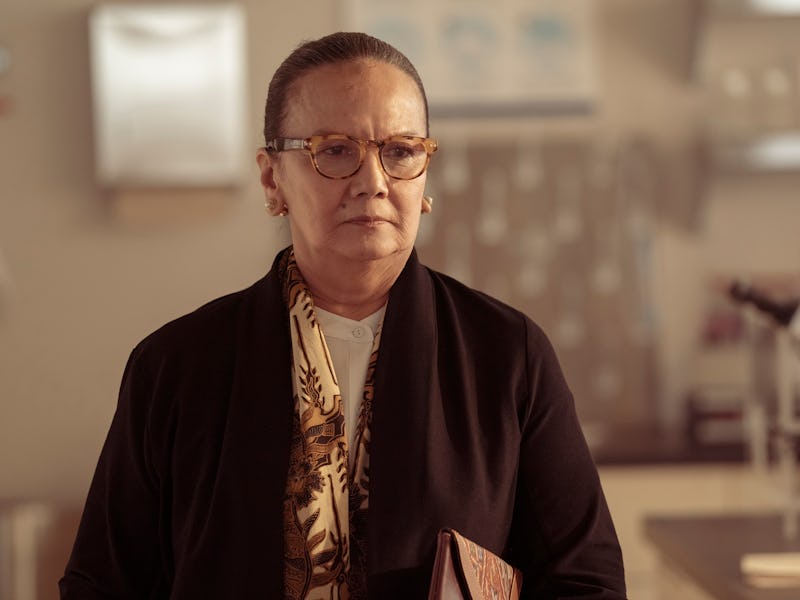The Last of Us Episode 2’s biggest change to the game is also the scariest
There’s nothing more terrifying than the beginning of the end.

One of the selling points of The Last of Us is how the television medium allows them to jump from perspective to perspective now that the narrative isn’t beholden to one or two playable characters. Because of this, we’re able to see more sides to the Outbreak, from the small child who is deceptively euthanized by Fedra to the 1960s talk show opening scene of the entire series.
Episode 2 starts with its own big swing, following an Indonesian mycologist asked to inspect the victim of a freak attack at a flour mill. As she realizes the worst-case scenario of the talk show in Episode 1 is coming true, she’s forced to break some terrible news to the authorities — words that hang over the rest of the series.
Spoilers follow for Episode 2 of The Last of Us.
In the video game, there’s no clear explanation of just how the outbreak started. If the player happens to read a newspaper available in the prologue, they can learn it probably originated with infected crops in South America. But the HBO series completely changes and fleshes out the origin.
In HBO’s The Last of Us, mutated heat-resistant cordyceps root themselves in the world’s largest flour mill (which really does exist in Jakarta). The discovery of these cordyceps prompt the local university’s professor of mycology — that’s the study of mushrooms — to suddenly be shuttled away from a restaurant in order to consult.
She’s over her head from the get-go: she sees cordyceps on a microscope slide, but doesn’t understand why the slide was prepared like a human sample. Then, it hits her — these are human samples. From then on, her tone isn’t one of confusion, but concern that quickly turns into dread.
In Episode 2, we finally learn how the outbreak went from minor news story to global pandemic so quickly.
After examining a cadaver who was bitten, she tries to form an action plan. The officers tell her there are more infected out there, and the only hope is a vaccine. She responds, terrified, that there’s no possibility of a vaccine. The only possible plan to stop the spread is one word, one word that sets the mood of basically the entire world from then on: “bomb.”
This isn’t exactly an unexpected reveal — we know that governments were willing to do whatever it took to stop the spread, an attitude that took the lives of two different children in Episode 1. Even the flour source wasn’t that surprising, as eagle-eyed fans pointed out how the Millers managed to somehow avoid flour products for the entire day before they evacuated. But the harsh reality of seeing someone who has dedicated her life to something declare, unequivocally, that society as we know it is over, is one of the most surprising and haunting moments of the series.
The Last of Us game creative designer Neil Druckmann brought the Indonesia sequences to life.
That isn’t an attitude exclusive to fans. “Neil did this remarkable job directing the Indonesian sequences,” Craig Mazin told Inverse in a roundtable interview. “It's terrifying.” Every post-apocalypse story presumedly has a moment where someone in authority realizes things are over. This one is just wise enough to give it the same weight and drama as any life-or-death zombie combat.
There’s no huge emotional breakdown, no acting for the back of the theatre. Just a scientist observing the facts with a practical defeated tone. She barely lets her feelings get to her as she asks if she could go home and spend time with her family. She knows she’s doomed, but she’d much rather have her city massacred than the entire world, a choice most of us would be terrified to make.
“The scariest moment, to me, is not the clickers, or a bloater,” Mazin said. “It's a scientist essentially saying, it's over. That's terrifying to me.”
The Last of Us is now streaming on HBO Max.